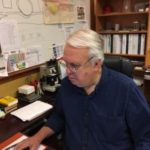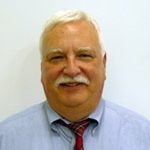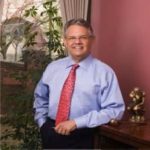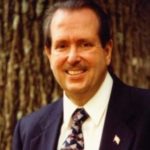September 2019
Finally, a Fuel Cell has arrived that has universal application
For a number of years, the most efficient type of fuel cell—the solid oxide fuel cell—has attracted large amounts of investment capital and intensive research and development activity by numerous companies and governments around the world. The reason is plain to see: SOFCs hold the promise of producing electricity relatively economically while at the same time generating far less pollution than “traditional” means of generating electricity.
Until now, however, SOFCs have not fulfilled that promise, owing to their high operating temperature, which makes them very expensive to build and leads to their rapid degradation in the field. That is why there are thousands of needs for fuel cells that cannot be met with conventional fuel cell technology.
But:
-
- What if there were an SOFC that could be turned on and off fast?
- What if it were affordable and did not require government subsidies?
- What if it lasted significantly longer, without requiring frequent replacement?
- What if it could be made from ordinary, inexpensive materials?
- What if its manufacturing process was simple, inexpensive, and scalable?
- Most important, what if its operating temperature could be cut to half that of other SOFCs?
- And what if (because of its low operating temperature) there was an SOFC that was cost competitive with PV, wind and most other gas driven generating systems?
- And, in addition, what if its operating temperature was so low that it could achieve energy efficiency ratings of over 75%, saving hundreds of billions of dollars in fuel consumption costs while reducing greenhouse gas emissions?
- And what if it could be produced cheaply enough to allow a “zero carbon” energy system to be deployed in areas where this is required by legislative mandate?
At long last, a fuel cell is about to appear on the market that is capable of doing these things: the PozCellTM from FCET. This has been made possible by a series of proprietary, patented and patent pending inventions developed over the past 10 years by FCET.
The core of FCET’s technological breakthrough and the foundation of its competitive advantage is its electrolyte film which is approximately five nanometers in thickness—about 1000 times thinner than the thickness many manufacturers strive to achieve. This thin film allows FCET to deposit an electrolyte that is approximately 7,000,000 times more ionically conductive than competing SOFCs. And this, in turn, enables the PozCellTM to operate at very low temperatures, drastically reducing the total system cost of its power generation unit.
OVERVIEW
FCET, Inc. (the “Company”, “we”, “our” or “FCET”) is an applied engineering and technology company utilizing nanoscale film technology to extend the life, reduce the cost, and increase the performance of solid oxide fuel cell systems (“SOFCs”). The core of FCET’s technology, and the foundation of FCET’s advantage over its competitors, is its unique highly conductive electrolyte film that allows our SOFCs to operate at very low temperatures, thereby drastically reducing the total system cost, among other benefits. Our mission is to become a disruptive and dominant market leader in the fuel cell industry by using our proprietary inventions to provide solutions and breakthroughs that conventional fuel technology has not provided to date.
The key obstacle to widespread commercialization and deployment of SOFCs has been the high operating temperatures required to produce sufficient conductivity within an SOFC electrolyte. Unlike burning or combusting fossil fuels, hydrogen fuel cells produce energy by a chemical catalytic process that converts reformed natural gas (hydrogen) and oxygen into electricity. SOFCs typically operate at temperatures between 1300oF and 1650oF (700°C to 900°C), and as a result, require the use of rare and expensive heat-resistant production materials and expensive hardware to harness excess heat. These high operating temperatures also lead to rapid degeneration of SOFCs in the field (degradation of 50% +/- in power output over a three-year period is fairly typical).
FCET has invested approximately $16 million to acquire, develop, patent, and bring to commercial viability a nanoscale film (electrolyte) that is dramatically more ionically conductive than any of our competitors, thereby extending the life, reducing the cost, reducing the operating temperature and increasing the performance of our SOFCs. These developments enable our SOFCs to have potential applications in new sectors (billions of dollars in size) that current fuel cell technology cannot address. Our prototype SOFC, the PozCellTM, has demonstrated a continuous downward trajectory of operating temperatures from > 620°C to between 560oC and 350oC, and this lower cost, efficient, scalable fuel cell has allowed us to transition to beta testing in furtherance of commercialization.
We expect that a series of successful field tests will generate significant interest from microgrid providers, solar installers, wind installers, and natural gas production sites in remote locations, and we intend to use a significant portion of the proceeds of our current high net worth investment round to produce prototypes for these field demonstrations. We anticipate generating revenue approximately 18 to 24 months thereafter (see page 3 for our revenue model).
OUR DISRUPTIVE TECHNOLOGY
Our core technological breakthrough is the development of an electrolyte film (see diagram on next page) that is roughly 1,000 times thinner than that used by current manufacturers. This film, approximately ten nanometers thick, allows our electrolyte to be millions of times more ionically conductive than that of competitors. This increase in conductivity is the reason why our SOFCs can produce such high output levels at drastically lower temperatures. We believe we are the only company with SOFCs capable of achieving sustainable, scalable output of commercial-grade power at operating temperatures below 560°C that can be built at a competitive cost.
COMPETITIVE STRENGTHS
FCET’s competitive strengths include: (1) our unique intellectual property portfolio, (2) strategic alliances with manufacturers and service providers pre-positioned as entry points into targeted markets,
- strong academic relationships, and (4) our experienced and dedicated management team.
Intellectual Property Portfolio. FCET’s intellectual property is protected by an extensive portfolio of patents, patents pending, and trade secrets with broad applicability for use across numerous applications. The following are some of the SOFC breakthroughs made possible as a result of FCET’s intellectual property:
-
- Production Costs: Our SOFCs can be made from common, inexpensive raw materials, eliminating entirely the need for expensive, high-temperature ceramics and reducing the amount of platinum used by most other fuel cells as a catalyst material.
- Heat-To-Power: Our SOFCs can be built into a system that does not require expensive heat-to- power conversion hardware needed by high-temperature SOFCs to capture heat for the cogeneration of power (thus lowering total system cost by approximately 40% to 50%).
- Longevity: The lower operating temperatures of our SOFCs are expected to result in greater longevity than either traditional SOFCs or other fuel cells (such as PEMs).
- Efficiency: Our SOFCs will operate with increased efficiency due to reduced energy losses from excess heat output.
- Capital Equipment: Our SOFCs can be manufactured with low-cost capital equipment.
- Inputs: Unlike PEMs, our SOFCs can operate without the purity of hydrogen required by PEMs (99.9% hydrogen purity required by PEMs is more expensive to produce). See “GLOSSARY – Proton Exchange Membrane (PEM) fuel cell.”
- Environmental: Our SOFCs will produce more electricity per cubic foot of natural gas than do gas generators (resulting in a smaller carbon footprint).
Strategic Alliances. FCET has a three-year relationship with NiGen International, LLC (“NiGen”), a Houston, Texas-based manufacturer and multi-million dollar service provider for natural gas and oil producers at drilling sites across the United States and Canada (and overseas in collaboration with Bechtel Corporation). FCET and NiGen have signed a letter of understanding for NiGen to serve as FCET’s manufacturing partner with respect to the placement of FCET’s fuel cell “stack” on platforms to be sold to oil and gas producers. NiGen’s principals and FCET have identified their complimentary business offerings and have begun designing the 5kW to 25kW “stack” and “balance-of-plant” system utilizing FCET’s PozCellTM system.
FCET also has been in discussion with Archer and Associates, Inc. (“A&A”) in Palo Pinto, Texas (west of Fort Worth). A&A offered to act as a service provider for installation, servicing and warranty work on PozCellTM systems in the field. Notably, one of the principals of A&A has patents on a methane removal technology from natural gas “flaring” and offered FCET entry into its methane remission oil and gas sites once the PozCellTM is ready to be deployed. Principals of both NiGen and A&A are investors in FCET.
Strong Academic Relationships. FCET has had long-standing collaborations with various research institutes, including an R&D relationship with Rice University’s renowned Smalley Institute for Nanoscale Science and Technology that focused on material science and nanotechnology validation testing. Having progressed from the nano-research stage of development towards viability testing, FCET has since been conducting engineering development and optimization testing at Oak Ridge National Laboratory (“ORNL”), Clemson University’s Advanced Materials Research Laboratory (“AMRL”), and the Georgia Institute of Technology (additional materials relating to testing results are available upon request).
Management Team. Our management team, comprised of scientists, engineers and patent attorneys, has worked together for more than 20 years on process technologies to advance our current technology. Our team has deep experience in the various disciplines necessary to bring our technology from the laboratory to commercialization (see the biographies under “MANAGEMENT” for details). Furthermore, FCET’s partners and board of advisors are well-positioned to support the management team in bringing FCET’s technology to commercialization upon completion of the next phase of testing.
INDUSTRY SECTOR / MARKET SIZE
To date, the fuel cell market has remained a niche market because of fuel cells’ high costs and limited applications. There are relatively few publicly traded companies with a primary focus on the manufacturing, distribution, or integration of fuel cells, and none have been able to generate sustained profitability.
The largest maker of solid oxide fuel cells, Bloom Energy (“Bloom”), has raised over $3 billion in equity and debt financing since inception. Bloom estimates an $800 billion serviceable addressable market (“SAM”) based on the cost of electricity generated globally in 2016 for commercial, industrial, and public services (see Bloom’s S-1). We estimate that about 20% of this $800 billion is attributable to power plant assets, making the SAM for stationary fuel cell equipment somewhere around $160 billion globally. Though projects carried out by Bloom thus far include the development and installation of 100 kW to 200 kW units for Google, Apple, and other large enterprises, Bloom has been reliant on sizeable government subsidies to enter into many of its niche markets.
FCET believes that its breakthrough electrolyte technology will initially allow it to meet a wide variety of energy needs outside the traditional grid. Notably, Bloom’s SAM market estimates do not account for utilization of a breakthrough technology such as FCET’s. Because FCET’s technology may be 40%+ less expensive and capable of operating at much lower temperature than Bloom’s fuel cells,
FCET’s prospects could expand far beyond the current SAM (Navigant Research estimates that the demand for stationary fuel cells will be closer to $40 billion by 2022 in the United States alone).
Each of the following factors is anticipated to play a critical role to the extent FCET is successful securing competitive advantages within the industry sector:
“Building Block” Style Fuel Cell. FCET will be able to sell its “building block” fuel cells directly into target markets with minimal modifications. To the extent varying energy levels are required, we can simply “stack” the requisite number of fuel cells together. This allows us to concentrate on manufacturing a single product. In addition, the relatively low material costs of FCET’s fuel cells should allow for reasonable gross margins at relatively modest production levels.
Complementary Energy Sources. FCET’s technology is equally applicable to several industries that are relatively decoupled from one another. FCET’s ability to sell to industries as diverse as microgrid companies, solar providers, gas drilling sites, and utilities would ensure that its growth prospects remain diversified and robust.
Distributed Energy. Distributed energy markets are expanding rapidly because energy can now be produced closer to major energy consumers such as “big box” retailers (e.g., Walmart and Target), manufacturing facilities, and mission-critical sites (e.g., police and fire stations, hospitals, telecom facilities, etc.). FCET’s clean, efficient, grid-independent, and scalable fuel cells will be uniquely situated to meet this heightened demand.
GROWTH STRATEGY
FCET expects to generate revenue through the use of joint production operations with established industrial manufacturers, using external distributor channels of sufficient size and geographical diversity to allow it to meet its ROI targets. FCET’s mission is to exploit new markets and then develop sales channels, both directly and through licensing or joint venture arrangements, to commercialize its technology.
Initial Goal. FCET’s initial goal is to exploit markets that current hydrogen powered fuel cell power generation technologies are unable to serve due to the cost and operational limitations of other SOFCs. For example, FCET has a letter of understanding with its manufacturing partner, NiGen, to begin this work. NiGen is charged with mounting FCET’s fuel cell stack into a working power system that will be fully assembled at NiGen’s plant in Houston, Texas. This system will be approximately 50% cheaper to build than the nearest competitor’s. We anticipate that PozCellsTM can then be scaled up from laboratory to manufacturing quantities quickly and easily due to low-cost capital equipment for manufacturing and commonly available semiautomated equipment for low-labor inputs for manufacturing.
New Markets Created. FCET’s capabilities give the PozCell™ new markets for several categories of customers, including microgrid developers, solar/wind providers, and military and national security vendors, among others. FCET intends to focus its near-term efforts on the following market segments:
-
-
- Distributed power for oil and natural gas producers
- Microgrids – Military applications
- Microgrids – Commercial and critical facility applications.
-
Distributed Power for Oil and Natural Gas Producers. There are about 18,000 drillers operating at remote sites, requiring an average capacity of about 25 to 50 kW of electric power per site from a diesel or gas generator. The gas generators used to provide electricity at many of these remote well head sites (1) “leak” large amounts of methane and other pollutants, and (2) produce noise that can result in use restrictions, prohibitions, or the triggering of local zoning prohibitions in residential areas or nearby towns. FCET’s noiseless, zero-methane emission fuel cells can address both of these difficulties. In addition, depending on the hydrogen input source, our SOFCs produce relatively low or no carbon emissions.
Matt Ferguson, President of Viceroy Petroleum and COO of FCET, Inc., plans to use one of his 350 well-heads as a demonstration site for a FCET’s fuel cell system.
Microgrids – Military Applications. Microgrids are distributed-electricity plants located at stationary sites such as military bases. Microgrids are made up of several types of electricity generators close to where the electricity produced is used and integrated. Since energy security is a subject of primary importance to the U.S. Department of Defense, microgrids are heavily utilized by the military due to their ability to generate power independent of the grid. Because both wind and solar are intermittent sources of power, an essential component of the microgrid is robust back-up power to ensure an uninterrupted supply of electricity when there is no wind and/or sunlight. We believe that our early customers will be companies that build and install microgrid components. These installers cross over into all the microgrid sectors that FCET intends to penetrate initially.
Microgrids – Commercial and Critical Facility Applications. Typically, co-generation equipment is needed to convert a fuel cell’s heat to steam generated electricity. This additional hardware can boost system cost by 50%+. Because the PozCellTM’s low operating temperatures will eliminate the need for expensive heat conversion equipment, FCET’s fuel cell systems become cost competitive with solar and wind power in the context of a microgrid. One potential near-term microgrid opportunity exists in the municipal utility districts (“MUDs”) outside Houston, consisting of high-value residential neighborhoods with independent water and sewage-treatment capabilities. The grids used to power these neighborhoods are susceptible to hurricane damage, which can result in outages in drinking water and sewage systems. Installation of a noiseless, pollution-free microgrid powered by our SOFC generators would provide MUDs with utility services independent of the power grid. FCET has obtained the electrical specifications necessary to integrate its fuel cell system into one MUD’s back-up power for well-water and emergency lighting during hurricane impairment of the Houston grid. FCET has been in discussion with an area real estate developer interested in implementing FCET’s SOFC technology for such purposes in other MUDs.
MANAGEMENT

Matt Ferguson, Advisory Board Member (Elect)
Mr. Ferguson has experience in the oil field market space that FCET is about to enter. FCET’s initial market entry will be in the oil and gas space. Mr. Ferguson is positioned to deploy one or more of FCET’s fuel cell systems at Viceroy Petroleum (discussed below) well sites. Having a demonstration site proving the viability of FCET’s fuel cell system and the diminution of methane gas emissions is an important benchmark for 2019. Since Mr. Ferguson worked for ExxonMobil after graduating A&M he has the experience to deal with customers both from small family-owned production assets and large tracts held by corporations. He also brings to FCET’s management team an engineering skill set critical to the manufacture, installation, and maintenance of fuel cell systems in the energy space and other markets. For the past 16 years Matt Ferguson has accumulated back-office experience as President of Viceroy Petroleum – managing vendor accounts, legal affairs, general accounting practices, finance, communications, governmental and security concerns as well as human resources. Mr. Ferguson has experience managing tens of millions of dollars of production equipment and assets in excess of $70 MM, and has been involved in developing quality control protocols and the procedures for installing and maintaining oil and gas production processes at over 350 oil and gas production sites.

Mikhail Pozvonkov, Executive Vice President and Chief Scientist; Board Member, PhD
Mikhail Pozvonkov has served as Chief Scientist and as a member of the Company’s board of directors since 2011. Dr. Pozvonkov is the principal inventor of all C3 and FCET fuel cell patents. Dr. Pozvonkov has been instrumental in the development of all C3 and FCET technologies over the last 17 years. Dr. Pozvonkov studied chemistry, mechanics, and cryogenics at Moscow University of Chemical Engineering. After graduation, he worked in the Solid-State Physics Department of the Kurchatov Institute for Atomic Energy, a world-renowned national laboratory in Russia comparable to Oak Ridge National Laboratory in the U.S. Dr. Pozvonkov conducted R&D for 22 years in fields such as low-temperature physics, superconducting materials, high magnetic field systems, and heat transfer in super fluid helium. He was twice recognized as Scientist of the Year by the Kurchatov Institute, and was also awarded a bronze medal at the Soviet Union Scientific Show for his work on the world’s first “Superconducting Plasma Fusion Tokamak T7 Reactor.” Dr. Pozvonkov worked in R&D for the Minnesota Valley Engineering Company and then the testing department of Siemens Energy and Automation after immigrating to the United States in 1993. Dr. Pozvonkov and Mr. Deininger met in 1994 and have worked together ever since.

Paul Fisher, Vice President of Manufacturing and Marketing; Chairman of the Board; Board Member
Paul Fisher has served as Vice President of Manufacturing and Marketing and as a member of the Company’s board of directors since 2014. As Vice President of Manufacturing and Marketing, Mr. Fisher has guided the development of FCET’s solid oxide fuel cell in the lab and steered the final product towards a design that can be scaled-up easily and cheaply with inexpensive materials and off-the shelf manufacturing equipment. Mr. Fisher’s wide range of experience with manufacturers and laboratories make him uniquely qualified for this critical function.
Mr. Fisher’s experience in the design of manufacturing processes includes:
Business Manager of Electronics at Liquid Control Corp., where he was responsible for sales and marketing of automated meter-mix-dispense equipment to electronics manufacturers worldwide (including those involving vacuum application), for management of the electronic application engineering department, and for preparation of equipment price proposals and quotations. Vice President of Hedrich Vacuum Systems North America (US and Germany), where he managed all North American business (marketing, sales installations, shipping, spare parts, technical service, trade shows, etc.) and sold highly automated and customized production equipment to companies such as Delco (General Motors), Ford, Diamond Electric (Chrysler), Bosch, General Electric, ABB, Siemens, and Schneider.
Mr. Fisher’s laboratory background includes service as:
Operations Manager, International Research Center at Courtaulds Aerospace, where he reported to the senior corporate vice president of technology and, among other things, renovated the entire corporate R&D lab facility in Burbank, CA. Technical Supervisor, Dielectric Liquids & Optoelectronic Products at Ciba Geigy Corp., where he was manager of chemists and technicians conducting research and development on formulated resins sold to electronic device manufacturers (e.g., Hewlett-Packard, IBM, Siemens). Senior Research Associate, Electronic Materials Group at Stauffer Chemical Corp., where he was the inventor on U.S. Patent 4,761,335 for transfer metallization of thin film sputtered copper (for finer line/space flexible electronic circuitry) while developing such products as transfer-metalized thin- film circuitry and wafer-dicing/die-attach film for companies such as National Semiconductor and IBM. Director of Thin Film Technologies at C3, where he investigated the technical and market applications for C3’s unique thin-film application techniques in areas such as solid oxide fuel cells, thin-film photovoltaic solar cells (principally, ‘CIGS’), quantum-dot PVs, printed electronics, light-emitting diodes (LEDs and OLEDs), energy-storage devices (batteries), photonic devices, memory devices (microelectronics), and others. Mr. Fisher was named a co-inventor on one of C3’s solid oxide fuel cell patents.

Kevin Baarson, Director of DoD Marketing,
Kevin Baarson served part-time in 2017-18 as a consultant developing a plan to insert FCET’s fuel cell systems into the DoD at several mission critical sites. He plans to become a full-time employee upon his expected return from overseas military duty in February 2019. Mr. Baarson has more than 13 years of leadership experience in logistics and operations with the US Army. He has served all over the world in various capacities, most recently as the Command Theater Airdrop Advisor for CENTCOM and Director of a Theater Operation in South
west Asia. Mr. Baarson has a B.S. in environmental science from the University of North Carolina – Wilmington. He also has an M.B.A. and an M.S. in finance from Northeastern University. Mr. Baarson holds a certificate in Geographic Information Systems, has a Hazardous Waste & Emergency Operations Certification, and has completed Lean Six Sigma and APICS training.
Brian Long, Director of Business Development and Government Affairs
Brian brings with him years of experience in the Washington, DC political world, having worked in the United States Senate, for presidential and congressional campaigns, and in a government affairs role representing Fortune 500 companies before Congress and the Executive Branch. One of the many energy industry clients with which he was engaged remains a major player in the fuel cell industry. In his business development and government affairs role Brian develops strategic partnerships in related industries and key relationships with those on Capitol Hill and beyond. Brian can be reached at brian.long@c3-fcet.com.
BOARD OF ADVISORS
FCET has established a Board of Advisors, whose members will assist with the Company’s strategic direction. This Board may be expanded and is currently composed of the following persons.
 Ronald Schutz
Ronald Schutz
Ronald Schutz founded SMART Group Houston and developed the trademarked SMART Process for overcoming financial planning obstacles after spending a career guiding individuals in investments. Mr. Schutz spent two decades in the financial services industry helping clients understand and plan for their financial futures. He holds a B.S. in mechanical and nuclear engineering from the United States Merchant Marine Academy and an M.B.A. from New York University. Mr. Schutz is an investor in both C3 and FCET.
 Vicki Keiser
Vicki Keiser
Vicki Keiser is an experienced CPA in financial practices. She spent 34 years at Deloitte + Touche helping senior executives and health care companies identify and implement enhancements to their accounting practices. Mrs. Keiser is a board member for several organizations, providing guidance in finance and accounting. She holds a B.A. in biology and an M.B.A. from the University of Texas at Austin. She is an investor in FCET.
 Mike Crifasi
Mike Crifasi
Mike Crifasi is president of CEI Financial Planning, Inc., a Registered Investment Advisor, and past chairman and president of the Georgia Society of Certified Financial Planners. In 1984, Mr. Crifasi co- founded Investor’s Trust and Bank and served as director. He retired from IBM in 1988 after 21 years as the Consulting Finance Industry National Marketing Representative. Mr. Crifasi holds a B.S. in industrial management from The Georgia Institute of Technology, with emphasis in chemical engineering. He is an investor in both C3 and FCET.

Neal Mitra
Neal Mitra served from 2014-2016 as the company CFO and is currently the CEO of AKJ Crypto plc, a hedge fund platform and fund-of-funds focused on the emerging cryptoeconomy.
Mr. Mitra has more than 20 years of experience as a corporate advisor, venture capitalist, and private equity investor. He previously worked with two equity fund managers that collectively deployed over $300 million across a range of venture capital, growth equity, and leveraged buyout transactions. Mr. Mitra began his career as a management consultant with McKinsey & Co. and Monitor Group, serving multi-national clients in the U.S., Europe, and Southeast Asia. He has an MBA from Stanford University Graduate School of Business, and master’s and bachelor’s degrees in mechanical engineering from the Massachusetts Institute of Technology.
GLOSSARY
Balance of Plant: Ancillary components that support the fuel cell stack and make a fully operational system, including a hydrogen tank, gas feeds, thermal and electronic control panel, AC / DC and Inverter electronic devices, a platform for the fuel cell stack, and a container to house the device.
“Building Block” Style Fuel Cell: Our unique fuel cell design that allows varying energy needs to be met by simply “stacking” the requisite number of fuel cells together. FCET’s PozCellTM was developed in this “building block” style.
Cathode/Anode: In a fuel cell the Cathode is the negative terminal and Anode is the positive terminal.
Distributed Energy: Distributed energy is electrical generation and storage performed by a variety of devices connected in a system that is decentralized, modular, flexible, and located close to the load it serves. Distributed energy systems typically have capacities of 10 megawatts (“W”) or less , can incorporate multiple generation and storage components,and are sometimes referred to as “hybrid”power systems. In contrast to distributed energy, conventional power stations are more centralized (e.g., cal-fired, gas, and nuclear-powered plants, hydroelectric dams, and large-scale solar power stations) and often require electric energy to be transmitted over long distances.
Electrolyte: The key component of a solid oxide fuel cell, which is used to create an electrical current by conducting negative oxygen ions from cathode to anode. All else being equal the higher the conductivity of an electrolyte the better a fuel cell will perform.
Request Financial Information
Video
For a closer look at the FCET Opportunity, watch a 16-minute video documentary:

